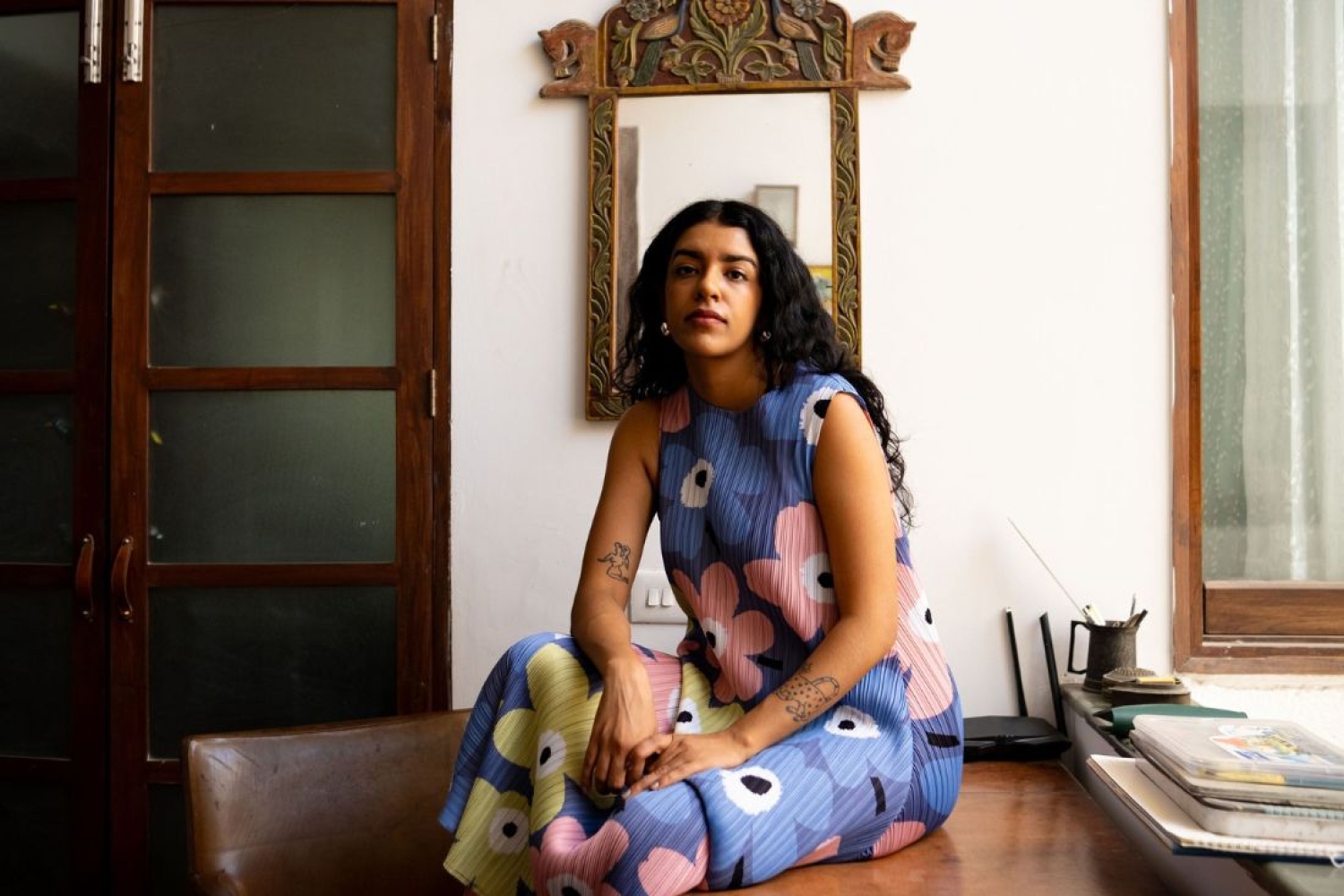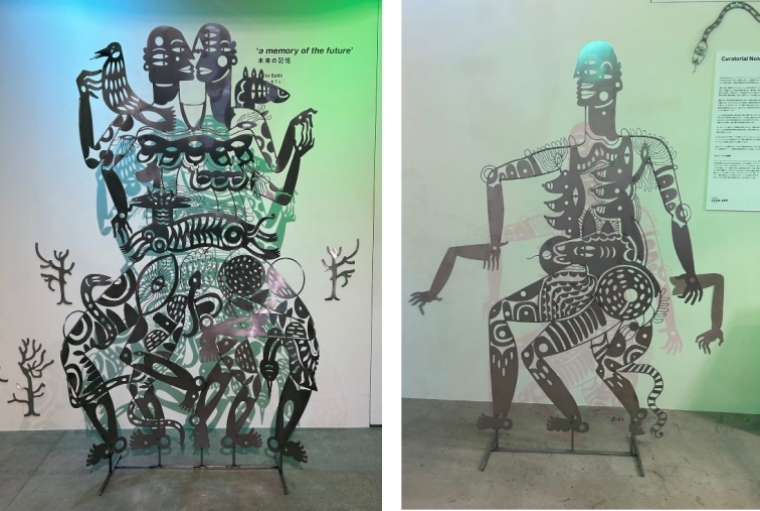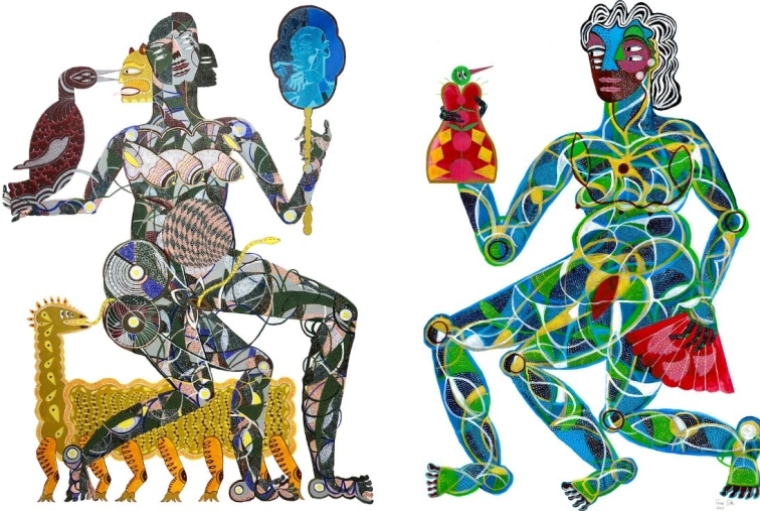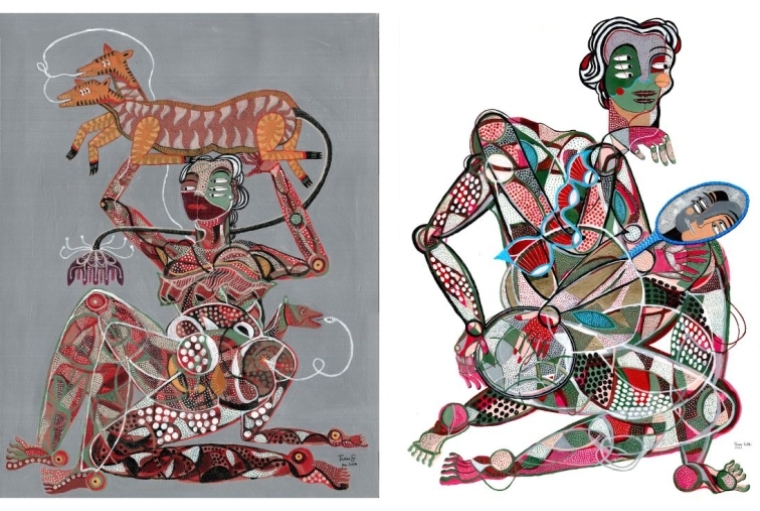

Artist Tarini Sethi’s exhibition ‘The Fire Within’ at the Untitled Art Fair, Miami won the Vortic Prize this month! She participated in the fair along with Viraj Khanna as a part of the two-person exhibition represented by Rajiv Menon Contemporary, I-pop, which articulated an emerging pop aesthetic in India. Tarini explores the universal themes of identity and sexual liberation with her metal artworks. She invites us to dream of a harmonious future, one where art serves as a bridge between our collective past and the limitless possibilities ahead—combining the worlds of India and Japan in a vibrant form of creativity—deeply influenced by Japanese erotic art, Shunga, and Kama Sutra.

Tarini Sethi
Sethi’s introduction to Shunga played a pivotal role in her creative development, stemming from her childhood. “My mother was going to Japan a lot for work and was bringing back a lot of really beautiful books,” she explained. “I was struck by the similarity to the Kama Sutra, which also showcases erotica in a beautifully poetic way.” This early exposure allowed her to blend influences, leading to a distinct artistic voice focused on the body and world-building.
Sethi's work delves into themes of the body and sexuality, an exploration that resonates within both Indian and Japanese contexts. She noted, “It’s interesting coming from a country like India where we have so many roots in sexuality when it comes to the Kama Sutra, but the idea of showing our skin is so taboo.” This tension mirrors the Japanese cultural landscape, where, similarly, there are unspoken themes of sexuality despite societal norms. “The more I stayed there, the more I realized how similar we are,” she added, reflecting on the shared complexities of both cultures.

Tarini Sethi and Rajiv Menon
When asked about her creative process, Sethi described it as instinctive and fluid. “I’m obsessed with taking photographs of everything, from nature to random objects,” she shared. Her mind continuously weaves these images into fantastical ideas, leading to creations that blur the lines between reality and imagination. “It’s all very automatic drawing; I can’t start by thinking, ‘Okay, this is what it’s going to look like.’ It’s about letting things flow.”
Sethi hopes that her sculptures invite viewers to envision a harmonious world where nature and humanity coexist. “I want them to see a world where there is harmony,” she emphasized. Her installations, designed to interact with light and shadow, are particularly meant to reflect the viewer’s own presence, fostering a connection that merges their reality with her artistic vision.
Reflecting on the evolving art landscape in India, Sethi noted a growing openness towards contemporary expressions. “In the last five years, we’re seeing a lot more alternative art fairs and galleries open to younger artists,” she observed. This evolution stands in contrast to the art scene in Tokyo, which she described as richly funded and visually engaged. “You see art everywhere in Japan, even in the smallest details, like beautifully designed chewing gum wrappers.”
